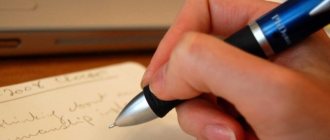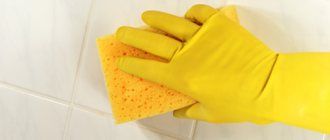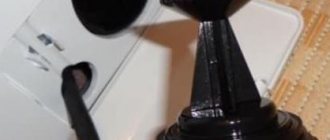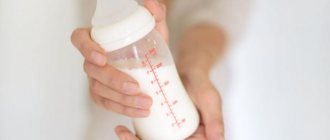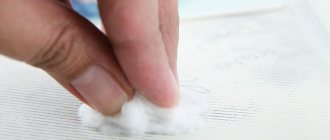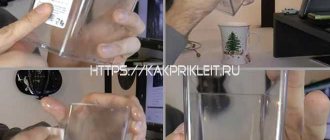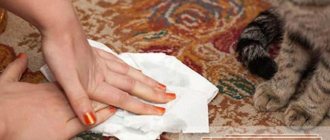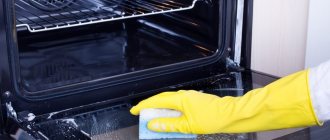How to Remove Stickers from Furniture
Sellers will definitely put a sticker on all the furniture and items you purchase, which you will have to fight with later. The sticker must be removed very carefully, since no one really wants to spoil the furniture. For this purpose, several effective ways have been created to remove stickers from the surface of objects using various available materials. Any sticker requires its own approach, it all depends on what material it is made of. Before you get started, there are a few rules to remember:
- Many decals are made of vinyl, so you should carefully peel off the vinyl and leave only the adhesive backing.
- In some situations (if the sticker has been removed well), the place where it was placed can be wiped with soapy water and there will be no trace of stains.
- It is much more difficult to remove the old sticker, since the adhesive base has time to harden. And that’s why a hairdryer will come to the rescue; under the influence of hot air, after 3 minutes the adhesive base will begin to soften. Once the sticker has become soft, removing it is as easy as shelling pears, and the area where it was located can be wiped with a simple cloth.
- Removing the sticker from the dishes is very easy and you don’t need to spend a lot of effort, just put the dishes in hot water, then remove and wipe with a cloth, not a trace will remain of the sticker.
If you manage to remove the sticker, then all that remains is to remove excess glue from the surface. Before proceeding to the last step, determine the type of glue. If it turns out to be soluble, then you can apply the following means to it:
- Ethanol;
- Vegetable oil;
- Concentrated vinegar;
- Petrol;
- Acetone.
To determine the type of glue, you don’t need much effort; use the experimental selection method and find out which product is more effective. Using such products you can get rid of not only the sticker itself, but also its sticky base.
Methods for removing stickers from glass surfaces
Glassware, car glass, window glass or mirror glass look attractive only if it is absolutely clean and transparent. Unfortunately, manufacturers often attach various stickers to the glass indicating the brand or price. And it’s not easy to remove such a sticker, and it’s even more difficult to wipe off dried glue residue without damaging the glass.
There are proven methods that allow you to remove both the sticker and the adhesive with a minimum of effort. They can be divided into 2 categories:
- homemade - stickers and dried glue can be easily removed with products found in every kitchen and pantry;
- specialized - on the market you can find chemicals designed specifically for removing stickers and glue from glass.
Which method to choose depends on financial capabilities, time available and the complexity of the contamination. In addition, you need to choose products taking into account the purpose of the glass object, for example, cups, plates or other utensils are not recommended to be treated with the same chemicals as window or car glass.
How to remove a sticker from furniture?
In childhood, all children love to put up everything in the world; furniture also does not go unnoticed. But over time, everything changes and what previously seemed funny now needs to be removed. Each type of furniture has its own approach.
Furniture that is fully polished
For such furniture, the method is to remove the sticker with oil.
- The sticker must be wiped with oil.
- 10 minutes and you can start working.
- Plastic will help remove the sticker; use any plastic, such as a card.
- There is no sticker, but the oil remains. A soap solution will help remove any remaining oil.
- All that remains is to wipe the entire surface and polish it with a special product.
Note. Most often it is recommended to use a hair dryer, but on such surfaces it can leave behind white marks if the sticker is overheated. You can also use gasoline instead of oil, but the process must be accelerated so that caustic substances do not damage the furniture.
Wooden furniture
Furniture made of wood is very tolerant of temperature changes, and it can also come into good contact with some acetone solvents, which is why acetone, alcohol, vinegar, and so on can be used to remove unfriendly patterns.
If you don’t want to lubricate the sticker yourself, you can use a spray bottle. To do this, you just need to pour the product into it and get to work. After spraying, the adhesive base is very easy to remove by picking it up with a knife or a regular spatula.
Why is oil not our best friend in this case? Because when using plant substances, they will be absorbed into the wood and will remain there forever. Not only will it be absorbed, but it will also leave behind a large greasy stain that, alas, cannot be removed.
Furniture made of plastic
Stickers on furniture made of plastic must be removed early, since the adhesive protective film dries on it very quickly. In order to remove unwanted film from plastic, you must:
- Warm up the sticker on the furniture with a hairdryer;
- Tear off the unfriendly film from the surface as soon as possible;
- To wash the remaining part, use a well-known soap solution;
- Clean the furniture with a cloth so that nothing remains on it.
Removing stickers from glassware and mirrors
It is much easier to remove stickers from dishes than from furniture. For this, alcohol comes to our aid.
- Take a swab and moisten it with alcohol;
- Wet the surface of the sticker;
- 10 minutes and you can start working;
- The stain that remains on the surface can be removed with ordinary dishwashing detergent;
- We wipe our item.
A sticker on the refrigerator is no problem!
Getting rid of the sticker on the refrigerator is even easier, since you only need a hairdryer. Melt the glue with a hairdryer without fear that the surface of the refrigerator will deteriorate. The ill-wisher will clean up very easily, and what remains can be easily removed with window cleaner.
- If the sticker on the clothing is made of rubber, then it will be easy to remove, just heat it with an iron and remove it quickly before the glue cools down.
- If thermal printing was done, then alcohol can handle it. Under the influence of alcohol, the design will begin to wash off easily, the main thing is not to smear it, but shake it off.
- Also, if a transfer was made to fabric, but it began to wear off, the excess part can also be treated with alcohol, and then be sure to wash the thing.
- A drawing made from paints and markers can be destroyed with acetone. After cleaning, the item must be washed. But the color of the clothes will also change.
- Sequins or rhinestones that fall off leave marks behind them. They can be easily removed with a hairdryer and a cloth.
Acetone, alcohol or vinegar
If the glue still remains in some unknown way, the following will help to dissolve and wipe it off: vinegar, gasoline, kerosene, alcohol or acetone. The only condition is that these liquids should not be oily, but should be clarified (crystal clear, like water). Otherwise, if you use regular gasoline, an indelible dark blot will certainly form at the rubbing site.
How else can you remove stickers from furniture made of unvarnished wood? Specialists can simply wipe them off with sandpaper, and then sand and polish the area. But why resort to such difficult methods if, as already mentioned, the sticker can be removed from ordinary wood without any residue even with the help of a hairdryer?
Suitable means
The main task when removing stickers from various polished surfaces is not to leave any marks on them. It is important to remove the labels in such a way that there are no abrasions, roughness, scratches or traces of glue left.
The most difficult thing to remove from the wooden surface of furniture are old stickers and stickers that have hung for a long time and whose appearance leaves much to be desired. The fact is that during use, the glue penetrated deeply into the structure of the material, and since the edges are already quite frayed, even picking up the sticker will be problematic.
But even if you remove it, there is a high probability that the piece of furniture will look bad in this place. Therefore, it is very important to initially get rid of unnecessary labels on new items.
However, to effectively remove such things, there are a number of suitable means. For example, to remove a worn out old label, you can use a regular hair dryer. To do this, you need to carry out the following manipulations:
- set the power and temperature regulator of the hair dryer to minimum values;
- warm the sticker for 3-5 minutes so that the glue on the inside becomes soft and pliable;
- Now you need to pry the edge of the sticker with a thin strong object, not very sharp, but hard, and by pulling it, carefully peel it off entirely;
- then the smooth surface of the furniture can be wiped and polished with a soft cloth.
A hairdryer is a very convenient and practical device.
If the whole operation goes as it should, and you manage to peel off the entire sticker, then most likely there will be no traces left, and even with a detailed examination you will not be able to identify the place where the label was. This way you will return your furniture to a fresh, new look.
Different solutions
For other methods, you will need to equip yourself with a large number of materials and tools. For example, regular vegetable oil can help remove the sticker. To do this, you need to take a cotton pad, soak it in oil, and then saturate the label with it. You won't need a large amount of oil, but still be careful not to drip any of the furniture, as it will leave unpleasant greasy marks that will have to be thoroughly washed off.
The oil will act on the sticker material 5-7 minutes after application, now the surface can be easily cleaned with a plastic knife. Next, you should wipe the furniture with soapy water to remove greasy traces of oil from its surface, and then wipe it dry with a clean cloth. In addition to soap solution, the following can also help remove greasy marks from furniture: alcohol, vinegar, nail polish remover, dishwashing detergent.
Vegetable oil can be replaced with various types of solvents; they will do the job well: white spirit, solvent, solvent 646, 647, acetone.
By the way, alcohol is great for removing stickers from glass surfaces. The method of use is similar to the previous one. We use a cotton pad or swab and use it to moisten the surface of the sticker with alcohol. Literally 3-5 minutes will be enough to soak it, after which you can easily peel off and completely remove the label from the mirror.
The process of cleaning a wooden surface
If glue stains remain, they can be washed with a soap solution, dishwashing liquid or a special composition for washing glass and mirrors. A well-absorbing flannel or microfiber cloth will help you polish the mirror.
Vinegar can also be used to remove various stickers from furniture. It is most convenient to apply it to the surface of the label with a spray, after which it will take some time for it to take effect.
Note that when working with vinegar, the label can be easily removed completely, and no traces remain on the polished surface, so a soap solution for cleaning the surface from streaks and stains will not be useful this time.
Using the above methods, you can easily remove unnecessary elements from the decorative surface, revealing its potentially beautiful appearance. The main point when removing labels from furniture is that you do not need to use all kinds of abrasives that will damage the surface and remove some of the varnish. Extra scuffs and scratches will not decorate your furniture in any way, remember this.
How and with what to remove stains
Methods for removing stains differ depending on the surface that needs to be cleaned.
What can be safely treated on a metal object will have a negative effect on wood or plastic. Therefore, methods that are relevant for specific cases are presented below. Attention! Remember to take precautions and test the product on an inconspicuous area of the product before using it. If you neglect this recommendation, you can ruin the appearance of the furniture so that it will be impossible or very difficult to restore it.
Remove super glue moment
Everyone knows that if you use super glue carelessly, you can leave difficult-to-remove stains on your hands, clothes, or interior items. However, you can still get rid of them, and there are several ways to do this:
- Nail polish remover with acetone. Using a cotton swab or cloth, gently apply it to the contaminated area and leave for 20 minutes.
Use a toothbrush to remove the glue from the surface. Remove any remaining product by wiping the furniture with a sponge soaked in soapy water, and then wipe it dry. Important! Remember that this method is absolutely not suitable for cleaning products with a varnished coating; - Dimexide solution. Sold in pharmacies and some hardware stores. Apply it to a cotton pad and wipe the surface. After this, wash the furniture with clean water. It is better to work with rubber gloves, since the product has an aggressive effect on the skin of the hands (can cause irritation or allergies);
- Thermal impact. Heat dried super glue with a hairdryer or, conversely, try freezing it by placing ice on the problem area. When the glue melts or, accordingly, begins to crumble, you can quickly clean it off the surface with a spatula or knife;
- Alcohol or gasoline also do a good job of removing adhesive traces. However, they must be used carefully, otherwise you may accidentally erase the decorative coating.
This is interesting: How to remove stains on furniture, how to wipe off a wax pencil
If all these methods turn out to be ineffective, it is worth purchasing anti-glue designed specifically for removing such stains.
It is sold in hardware stores and is completely safe for human skin.
The substance is applied to the contaminated area and left for several hours.
During this time, the dried glue will dissolve, and you can easily remove its remains by simply wiping the surface.
Using anti-glue, you can clean even varnished or painted products without the risk of damaging them.
Remove tape from metal and wood surfaces
Despite the obvious benefits of adhesive tape in the household, this invention has one significant drawback. After removing it, sticky adhesive traces remain on the surface, onto which dust and lint settle. You can wipe off dirt on metal:
- Alcohol, acetone, white spirit or other solvent;
- Soap solution;
- Vegetable oil.
Attention! Using the latter product to clean wooden furniture is strictly prohibited. The oil will be absorbed into the wood and will remain a dark stain on it forever.
Alcohol-containing substances are also not recommended for wood. They are extremely aggressive, so their effect must first be tested on an inconspicuous area of the product. Otherwise, there is a risk of washing off not only the glue, but also the paint, varnish or other coating.
Today on the shelves of hardware stores you can find special products for removing traces of adhesive tape (including double-sided tape).
They also remove residual ink, grease, resin, toner and are used for cleaning hard surfaces.
The substance dissolves the adhesive base without damaging the product.
Rubber, latex and cellophane cannot be processed in this way, but everything else is cleaned quickly and effectively, and when wiping plastic, even a whitening effect is achieved.
Remove from stickers, labels
Whatever product you purchase, it will most likely have a sticker from the manufacturer on it, it is attached to the back wall of the furniture. You have to remove the label carefully so as not to damage the surface of the product. To decorate the interior we use decorative stickers on cabinet doors.
This is interesting: How to remove iodine stains on clothes
But sometimes it becomes necessary to remove decorative stickers. How to do this as simply and safely as possible? There are different methods depending on what material you have to work with.
If the furniture is polished, you can remove the sticker from it very easily using ordinary vegetable oil:
- Wipe the sticker with a cotton swab soaked in oil and leave for 10 minutes;
- Use a plastic card or knife to pry it off and remove it from the product;
- Remove any remaining oil with a cloth soaked in soapy water;
- Wipe the surface dry with a clean cloth.
To avoid cloudy stains, use a polishing liquid.
The same method is suitable if the sticker was removed a long time ago, but the adhesive trace remains.
Instead of oil, solvents such as white spirit, alcohol, and gasoline are often used.
However, they should be used with caution, removing the glue in small areas, and immediately removing the caustic substance from the surface with a clean cloth.
Do not scrub the stain with force under any circumstances: the product will corrode the polish, and it will be extremely difficult to restore the appearance of the furniture.
Information. Also remember that you cannot remove labels from polished products by heating them with a hairdryer. If they overheat, they may leave unsightly white spots. But this method can be used when removing stickers from wooden surfaces.
In addition, this material is more tolerant of solvents. The processing method is the same:
- Apply the product to the sticker and wait;
- Remove it by prying the edge with something sharp.
To clean plastic furniture, follow the following procedure:
- Heat the label with a hairdryer and tear off;
- Remove any remaining glue with a cloth soaked in soapy water;
- Wipe the surface dry.
However, care must be taken here, since high temperatures may melt the decorative coating (for example, veneer or paint), if any. In such cases, it is better to use already proven means: vegetable oil, alcohol or alcohol-containing solvents.
By the way, alcohol can easily remove glue from glass inserts. Soak a cotton swab in it and saturate the sticker. After this, removing it will not be difficult. Cloudy stains can then be removed using a special glass cleaner. However, they will not remain if the alcohol is replaced with table vinegar.
Household chemicals
All of the above methods for removing foreign elements from the decorative surface of furniture do not involve any special time or financial costs. In most cases, you always have such substances available at home. However, in hardware stores there are also professional household chemicals intended for similar purposes.
Household sticker and label remover
Using special compounds you can remove any stickers and decals from a wide variety of surfaces. Most often, such compositions are produced in the form of aerosols for easy application. These products do not cause damage to furniture, and after use, they do not leave any traces behind, evaporating in a few minutes. Many compounds can be used as a polish to add shine to the surface after removing the sticker.
To remove all labels and stickers from furniture, you can choose any method, but it is better to do this immediately after purchasing the item, before the glue penetrates deeply into the structure of the material. After all the procedures, do not forget to take care of your furniture, remove dust from it, wipe it with a soft cloth, and keep it looking beautiful.
Furniture without varnish
If the sticker is glued to a flat, unvarnished surface, under no circumstances should you resort to the option with sunflower oil. It will be absorbed into the wood, as a result of which you cannot erase it later even with sandpaper. Then how to remove a sticker from furniture? After all, even if you wet it with nail polish remover, you can get an indelible stain in this place from the dissolved paint of the sticker that has been absorbed into the wood.
In most cases, a hairdryer works great here. An unvarnished surface can be heated even more strongly, as a result of which the sticker on unvarnished wood will come off without any residue.
How to remove glue from a sticker
Stickers with markings on glass glasses and ceramic plates, informational stickers on plastic containers, and children's stickers on everything, sound familiar? Such labels are usually quite difficult to peel off, and if they do, in their place there remain unpresentable spots of glue, onto which dirt subsequently sticks.
In this article we will look at how and how to remove sticker adhesive from various materials and surfaces: plastic, glass, dishes, furniture, metal, books and equipment.
How to remove glue after sticker?
There are many ways to remove the sticker: from folk remedies to special formulations. However, not all methods are suitable for some materials, so we recommend choosing a removal method based on the material of the product.
What are the main ways:
- Special sprays and liquids for removing stickers and labels.
- All kinds of solvents, alcohol-containing compounds, degreasers (WD-40).
- Vegetable oils.
- Soap solution, dishwashing detergent, detergents with citric acid.
- Baking soda (mix with detergent and water).
- Hair dryer, iron, dishwasher, hot water (heating method).
- Eraser (mechanical scraping).
- Citric acid, vinegar.
- Bitumen stain cleaners.
- Scotch tape / adhesive tape (mechanical method).
How to remove glue from a sticker from plastic?
When removing a sticker from plastic, you need to be careful in choosing the method, since aggressive agents and solvents (alcohol, acetone, white-spirit, etc.) can negatively affect the color and surface of the product.
Detergents.
Experienced housewives mix a few drops of detergent with baking soda and a little water to form a paste. The resulting paste is applied for 10 minutes and then cleaned off with a sponge.
Using a hairdryer.
When heated, many adhesives lose their properties and become more plastic. You can also hold the sticker under running hot water.
Using solvents.
Alcohol, acetone and other solvents work well on the sticker itself, but they can damage the plastic, so it’s better to first apply a small amount of the substance to an inconspicuous area and watch the reaction. The same recommendations apply to table vinegar and WD-40 degreaser.
Mechanical method.
You can try to erase the sticker with a regular eraser. Traces that remain from the eraser itself can be removed using a soap solution. They can also be wiped off with a cloth or sponge, after wetting it with oil or soapy water.
How to remove a sticker from clothing using chemical solvents?
There are industrial pastes and liquid formulations on sale. Their formula is specially designed to remove adhesive solutions from wood surfaces and eliminate oil and tar stains. They are actively used by restoration workshops.
Instructions for use are usually printed on the bottle. There is no point in retreating from it and experimenting, wanting to enhance the effect of the composition. Otherwise, the furniture may be damaged. Usually the product is applied directly to the sticker and left for the time specified in the instructions. Next, the sticker is easily removed from wood or plastic; any remaining adhesive is removed with a soft cloth, onto which a small amount of industrial paste has previously been applied.
We suggest you familiarize yourself with: Cleaning product for chandeliers without removing
The use of special pastes allows labels to be removed quickly and without damage to the product, but they are not cheap. They must be used in strict accordance with the manufacturer's recommendations.
How to remove a label from glass?
Very often, stickers with markings and barcodes are glued to glass objects (glasses, vases, jars and other glassware). To ensure that important information is not lost during transportation or in the store, manufacturers use high-strength glue.
However, such a sticker or the glue left behind it greatly spoils the appearance of the glass product.
What can you do?
- Heating.
The adhesives used are often sensitive to high temperatures, so the label can be heated with a hair dryer or boiling water. If you have a dishwasher, you can wash the product together with the sticker in it; most likely it will come off along with the glue. Just make sure that the particular item is dishwasher safe, as crystal, for example, may darken. - Cleaners.
Cleaning products with citric acid are well suited; these are often used for washing windows, for washing dishes, and a solution of laundry soap. Such substances should be applied to the sticker and left for a few minutes, and then try to wipe it off with a sponge under running water. To enhance the effect, dishwashing detergent is often mixed with baking soda. - Vegetable oil.
The sticker needs to be soaked in any vegetable oil, and then picked up and removed from the surface. This method will only work for recently pasted stickers. Video instruction:
Important!
Glue from glass should absolutely not be scraped off with sharp objects.
Furniture
To remove labels from wooden furniture, use vegetable oil. This product does not expose even polished furniture to any danger.
Detailed description of barberry variety Thunberg Atropurpurea
Soak a soft cloth in vegetable oil and leave it on the sticker for ten minutes. Then remove the “lotion”, the sticker can be easily removed. Remove the oil with a dry soft cloth and polish the furniture with a special product.
Do not use a hair dryer to remove stickers from polished furniture. Hot air can damage the varnish and leave whitish marks.
Today it is very fashionable to use untreated wood to implement various design solutions. Stickers from such a surface cannot be removed with vegetable oil. The oil will only soak into the wood and leave a dark stain on it. But such wood is not afraid of solvents. You can use alcohol, acetone or gasoline.
Dark stains on plastic furniture that remain after removing various stickers can be easily cleaned using window cleaners or a regular antistatic spray. The product is sprayed onto the sticky surface and removed with a dry soft cloth along with any remaining adhesive.
If you need to remove a paper sticker, but it is firmly stuck and partially torn off, use tape. Apply the sticky side of the tape to the sticker and remove it along with any paper residue stuck to it. If the result is not perfect the first time, the process must be repeated.
Glue can be removed from any furniture using an ordinary school eraser. This will take a little time and persistence.
How to remove glue from labels on dishes?
The dishes are also often covered with labels, information leaflets, etc., especially if they are sold individually. It is better to get rid of such stickers immediately; the longer you use the product, the stronger the glue adheres to the surface.
- Acetone or table vinegar.
Moisten a cotton pad or any soft cloth with acetone, nail polish remover containing it or vinegar and gradually wipe off any remaining glue from the surface. - Heating.
Under the influence of a hairdryer or hot water, the glue will lose its properties and the sticker can be easily removed without leaving any traces. If the dishes can be washed in the dishwasher, then this option also works. - Oil.
The label can be soaked in vegetable oil. This option is not suitable for removing glue residue. - Special compounds.
Hardware stores sell label remover sprays or liquids (Label-Off, Defender). They effectively remove stickers from glass, porcelain, metal, cardboard, but can have a negative impact on plastic. - Cleaners.
Dishwashing detergents or cleaners with citric acid can cope with the problem if you apply them for a while and then wash them with a sponge under running warm water.
We do not recommend using chemical solvents such as white spirit for dishes, so that you do not have to get rid of the smell later.
How to remove sticker from furniture?
In cases with furniture, it is better to remove the sticker immediately, then it will most likely easily come off the surface, you just need to moisten it with a soap solution.
For old, stubborn stickers, the following methods are suitable:
- Heating with a hairdryer.
Just do not overdo it, so as not to damage the varnished coating; it is better to heat the sticker longer, but at medium temperature. - Solvents and alcohol-containing products.
Well suited for unvarnished and unpainted surfaces. - Vegetable oil.
Apply a cloth soaked in oil to the sticker and let the oil soak in. Then carefully remove the label piece by piece.
Folk remedies
You can remove stickers from furniture using folk recipes. There are many innovative ways to quickly solve the problem. One of these is the use of cough ointment. It is applied to the surface of the sticker for eight hours. During this time, the adhesive composition noticeably softens, so the Velcro easily lags behind the surface of the chest of drawers or coffee table; the remaining adhesive is removed with soapy water and paper towels.
Some types of glue dry and are easily removed after freezing. You can try this procedure using ice cubes. But here it is important to remember that such exposure is fraught with damage, so before using the product you need to conduct a test.
How to remove a sticker from a book?
Stores often paste price tags and barcodes onto the covers of books and magazines, which spoil the appearance. You can remove an unnecessary label by carefully picking up the tip or gluing tape on top and sharply tearing it off (not suitable for paper). Heating and special products, such as Label Off or Defender, which are sold in office supply and hardware stores, also work.
How to remove glue from stickers from plastic, glass, metal and fabric
The manufacturer is required to label its product, so any new item has a label. Most often it is simply glued. The buyer is expected to remove the markings easily. However, an unpleasant sticky residue almost always remains. Let's figure out how to remove glue from stickers from different coatings without damaging them.
Special means
The methods listed above for cleaning furniture from stickers are available to everyone and do not require any expense. But there are also special chemicals that can be purchased in stores. With their help, any stickers can be removed in 1-2 minutes from a variety of surfaces. Such aerosols are easy to apply, do not damage the coating on furniture, evaporate quickly and leave no traces. In addition to the fact that the product will remove the sticker, it will also give the polish a fresher look.
Regardless of which method you choose, you should strictly follow the rules for caring for your furniture, then it will last you much longer. Timely cleaning, only soft napkins and towels, gentle cleaning products - and your furniture will delight you with its neat appearance and luxurious shine of polished surfaces for a long time.
masterpomebeli.ru
We use improvised means
It’s great if the marking is easily separated from the base. But this doesn't always happen. Most often, a sticky mass remains on the base that needs to be removed. This can be done using the tools present in every home.
Fat (oil)
Any oil will do: edible or cosmetic. If they are not available, use margarine, mayonnaise, etc. The essence of the technique is that fat dissolves the adhesive paste. It softens and is easier to remove. The selected product is applied to the remaining glue and left for 5-10 minutes. After this, carefully clean the surface with a soft plastic spatula, an old plastic card, etc.
Alcohol
Alcohols and products containing them are used as effective solvents. The preparation is moistened with a rag, which is used to wipe off the sticky mark. To make the task easier, you can briefly hold the swab soaked in the solution on the stain. But only on condition that the base is not damaged. A wet wipe containing alcohol works in a similar way. True, there is very little of it there, so it will take a long time to rub.
Acetic acid
Another solvent. There is no need to take a concentrated preparation; a 9% solution, which is known as table vinegar, is quite sufficient. They moisten a cotton pad or a suitable cloth with it and apply it to the problem area for 10-12 minutes. Afterwards the base is cleaned and washed with clean water. This method is not always suitable for plastic; it can deteriorate.
This cleaning is very effective, but is only possible for surfaces that are resistant to high temperatures. To create steam, use a steam generator; if you don’t have one, an iron with a steam function or a regular boiling kettle will do.
Steam generator Polaris PSS 7510K
Eraser or melamine sponge
Removes adhesive paste residue well. To obtain a quick result, the stain is first soaked in soapy warm water, and after 10-15 minutes, wiped with a rough cloth. After this, rub with an eraser. A melamine sponge works in a similar way. It is a fine abrasive. Therefore, it cannot be used on coatings that may be scratched. Its use on dishes and all objects in contact with food is not recommended.
